Power consumption, BIOS selection and presets
AMD (as on the Radeon RX Vega64) also offers two BIOS variants on the Radeon RX Vega56 via switch, whose presets differ from each other. The power limit, as long as you don't manually move it, is for the BIOS 1 at measured approx. 260 watts and for the BIOS 2 at approx. 230 watts. This value is reached when you select the default "Turbo" in the Wattman. In addition, you will find the slightly more moderate profiles "Balanced" (Default) and "Power Save".
We tested all six possible variants at maximum gaming load (Witcher 3, Ultra HD) and accurately determined the power consumption. In addition, we have made a slight underclocking in the more economical BIOS 2 and lowered the power limit by 25%, as well as in BIOS 1 an overclocking with a 50% increase in the power limit. This means that a total of eight different presets will be available at the end, which we will discuss further later (efficiency, clock rates, temperatures, volume).
But first let's look at the power consumption in the overview:
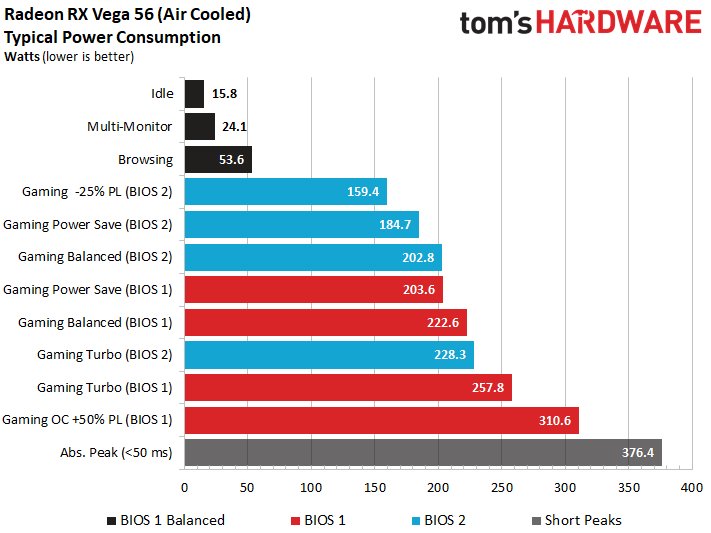
We used the maximum case of the highest possible overclocking to check the load on the motherboard slot. With 1.7 amperes instead of the 5.5 ampere allowed according to the PCI SIG, the only 27% utilization is a good thing if we remember the Radeon RX 480.
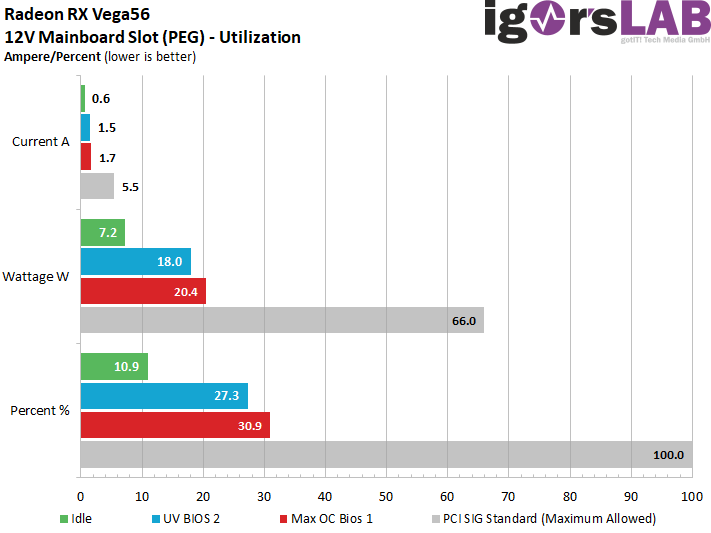
In the end, the cumbersome theatre with the second BIOS (and the associated opening of the housing when switching when switched off) could have been loosely given off. Because if we compare the measured values, then the "Power Save" mode of BIOS 1 corresponds roughly to the "Balanced" mode of bioS 2.
With a approx. 10% reduced power limit would also be used in BIOS 1 to specify the "Power-Save" mode of the BIOS 2, etc. So you could have used two identical BIOSes and instead inserted two more preselection settings in the Wattman and finished.
Single graphics for cable recording for BIOS 1
For each BIOS, we now once again juxtapose the measurement curves, which show very nicely how the power regulation and the utilization of the individual supply connections is presented over a certain period of time.
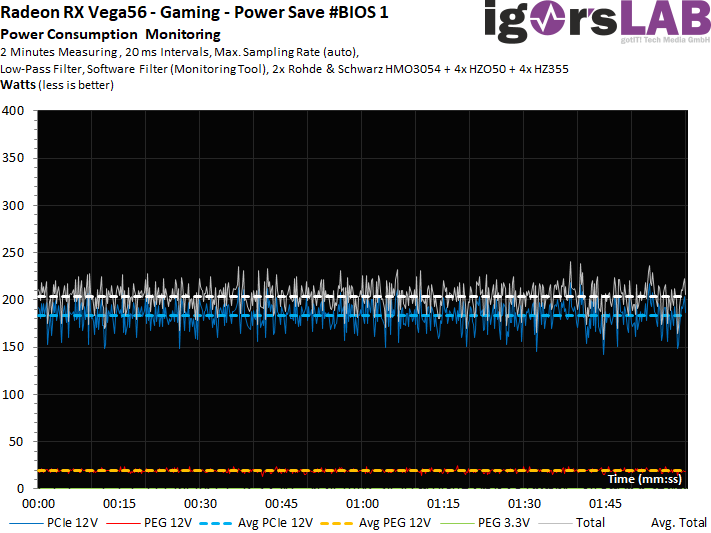
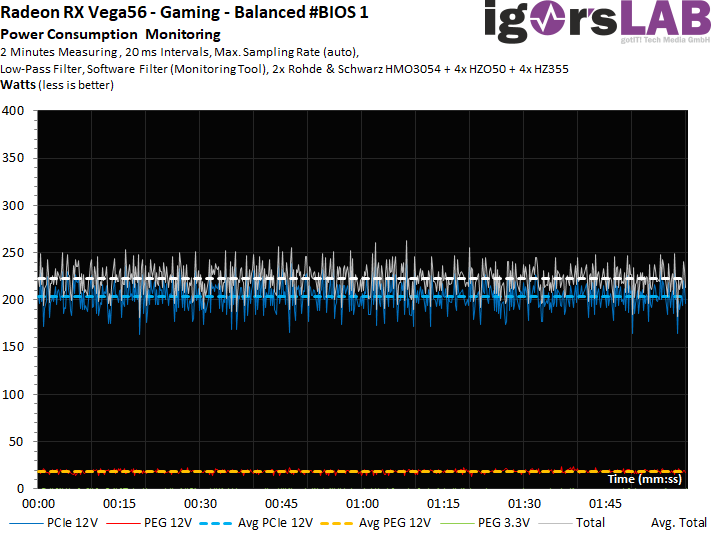
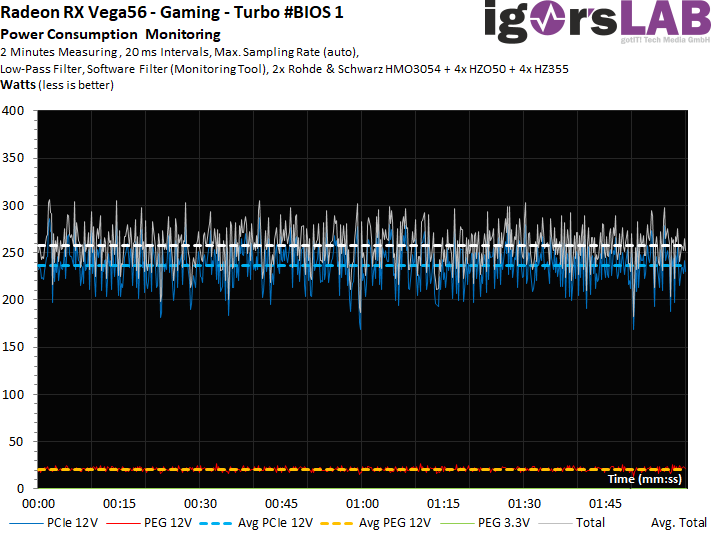
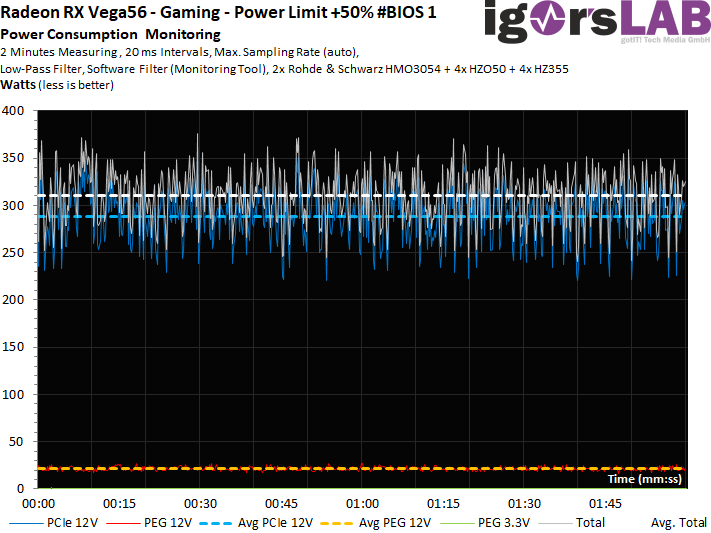
Single graphics for cable recording for BIOS 2
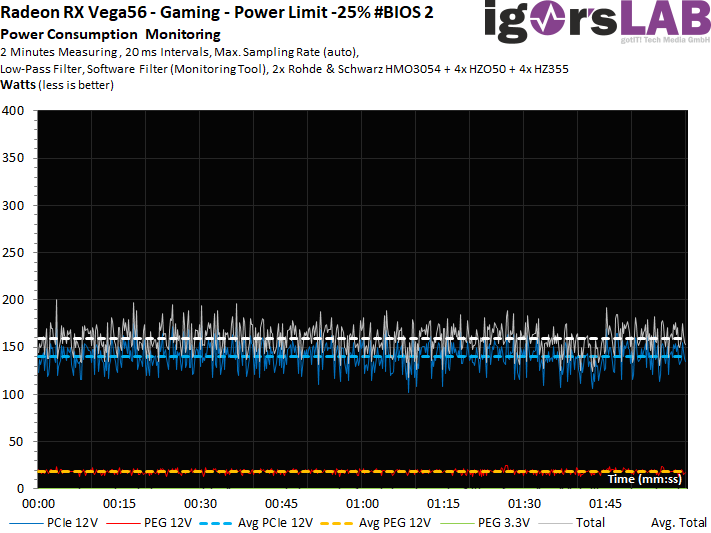
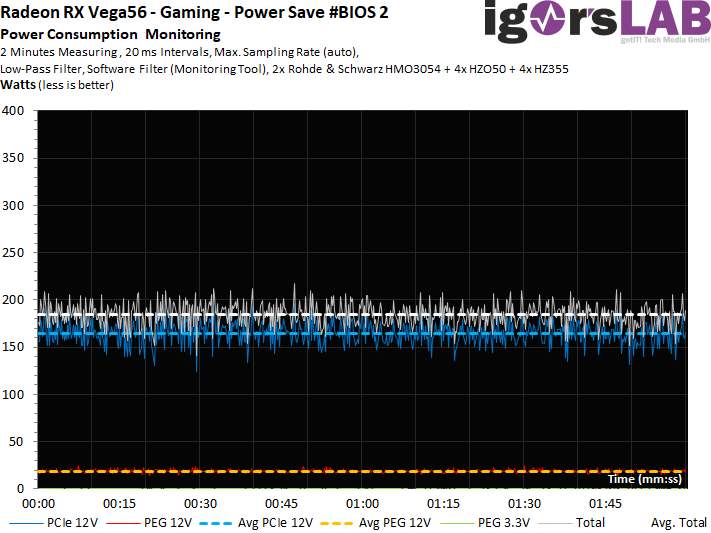
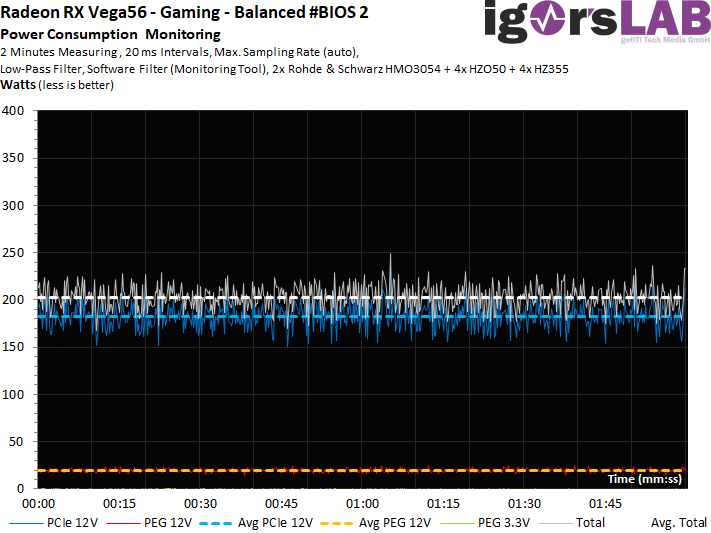
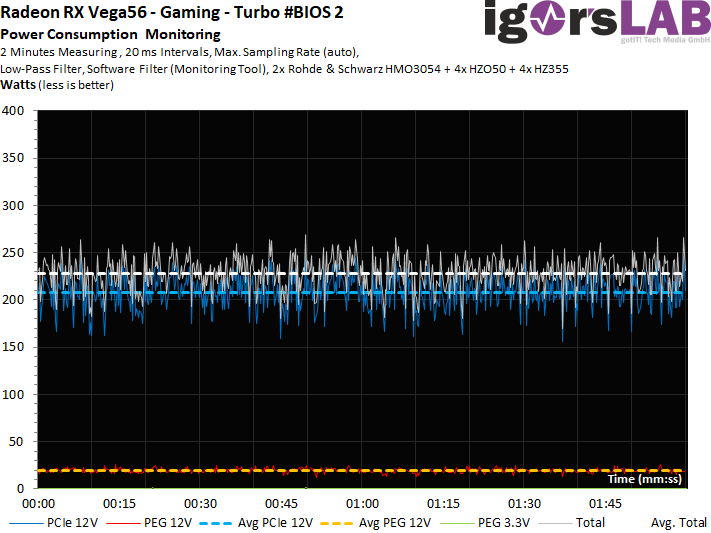
- 1 - Einführung und Übersicht
- 2 - Kühler und Package
- 3 - Platinendesign und Detailinformationen
- 4 - Mining, VR: Arizona Sunshine und Chronos
- 5 - VR: Dirt Rally, Robo Recall und Serious Sam
- 6 - Ashes of the Singularity: Escalation
- 7 - Battlefield 1
- 8 - Warhammer 40.000: Dawn of War
- 9 - Doom (2016)
- 10 - Tom Clancy's Ghost Recon Wildlands
- 11 - Hitman (2016)
- 12 - Metro Last Light (Redux)
- 13 - Tom Clancy's The Division
- 14 - The Witcher 3 Wild Hunt
- 15 - Leistungsaufnahme mit acht verschiedenen Settings
- 16 - Übertaktung, Untertaktung, Effizienz und Temperaturen
- 17 - Lüfterdrehzahlen und Lautstärke
- 18 - Zusammenfassung und Fazit

































Kommentieren